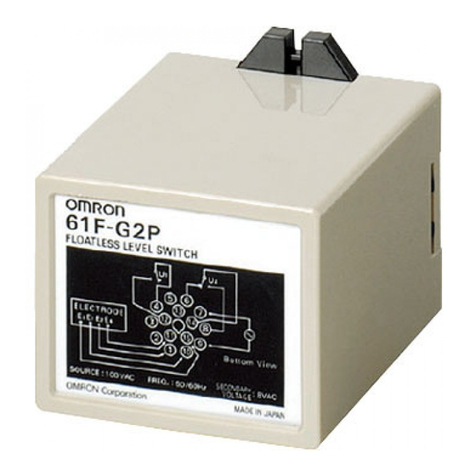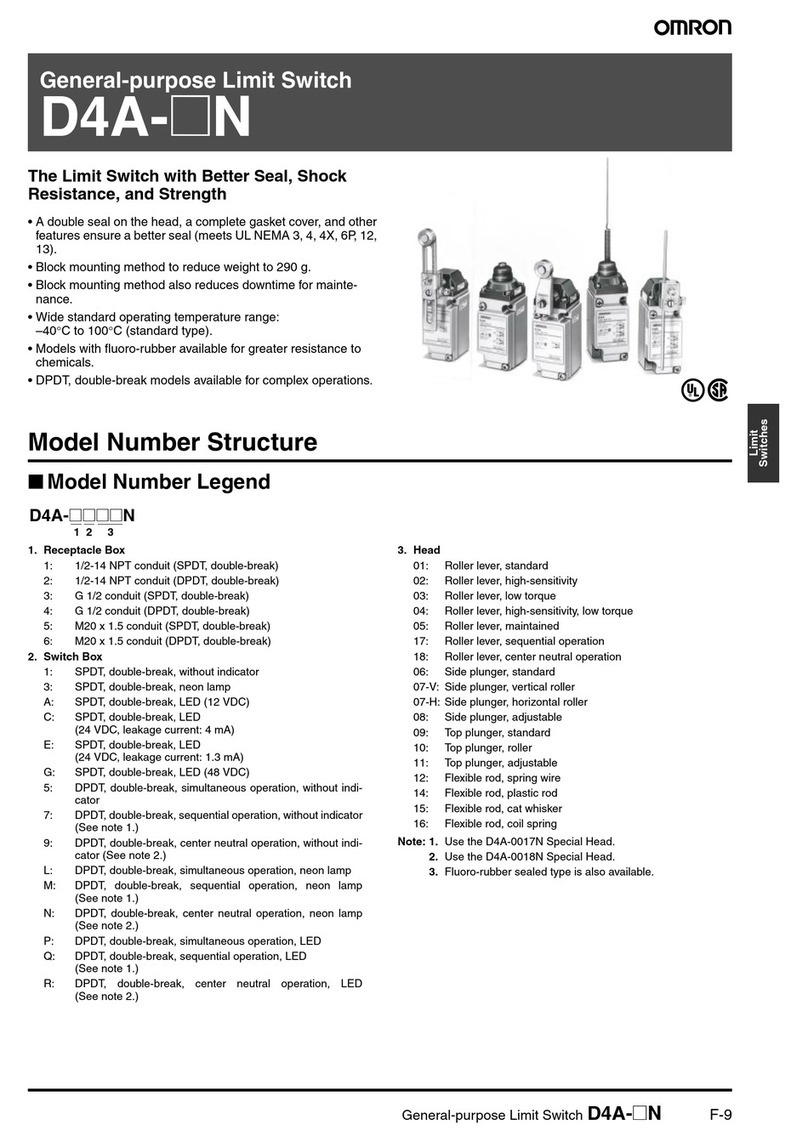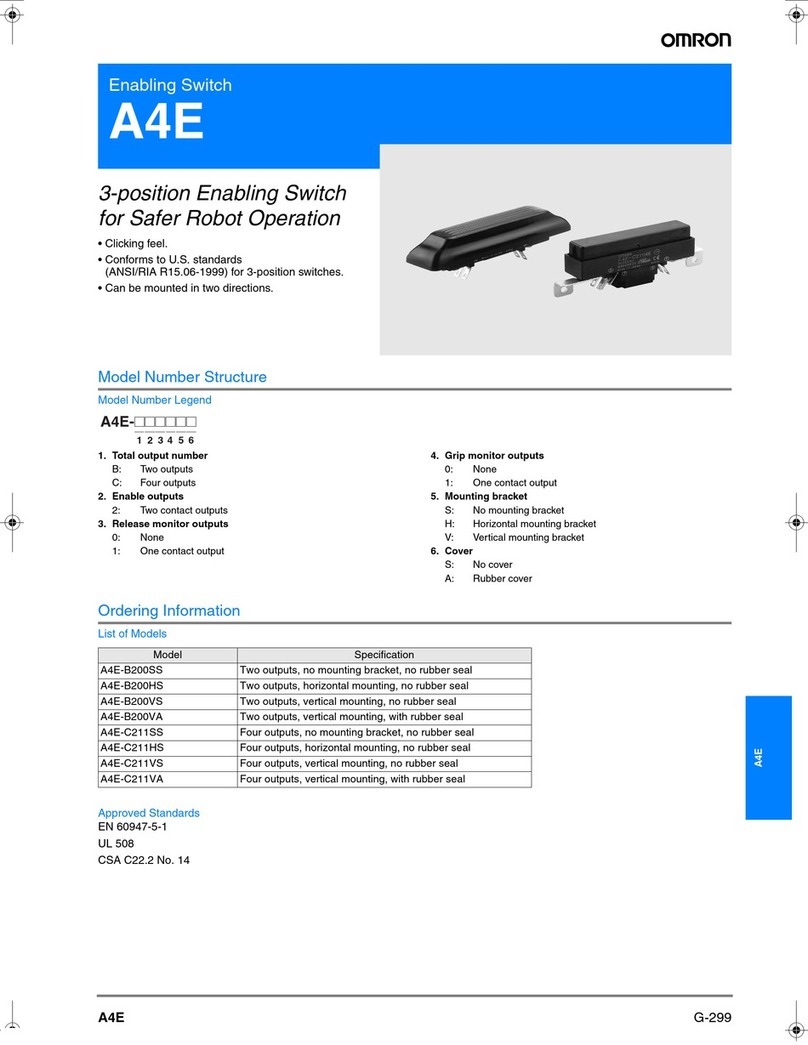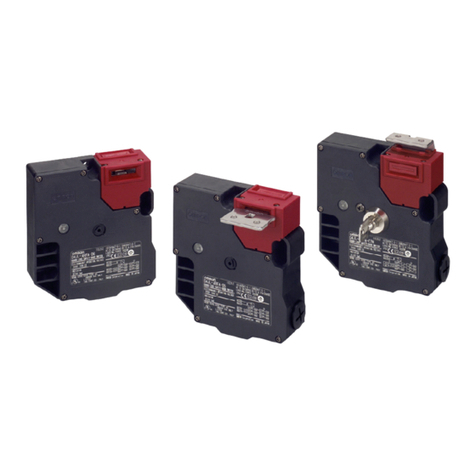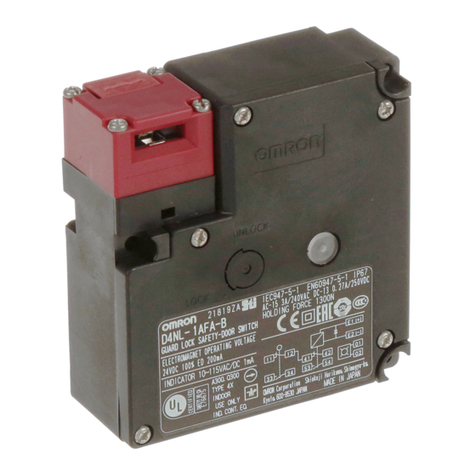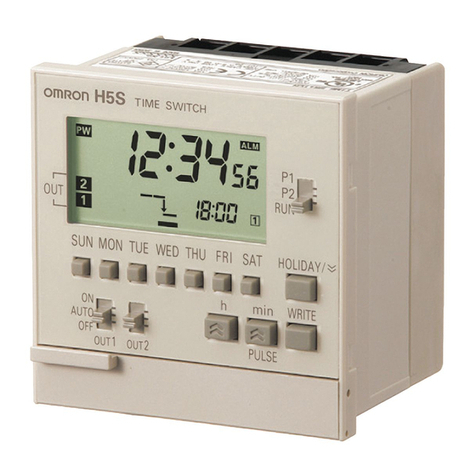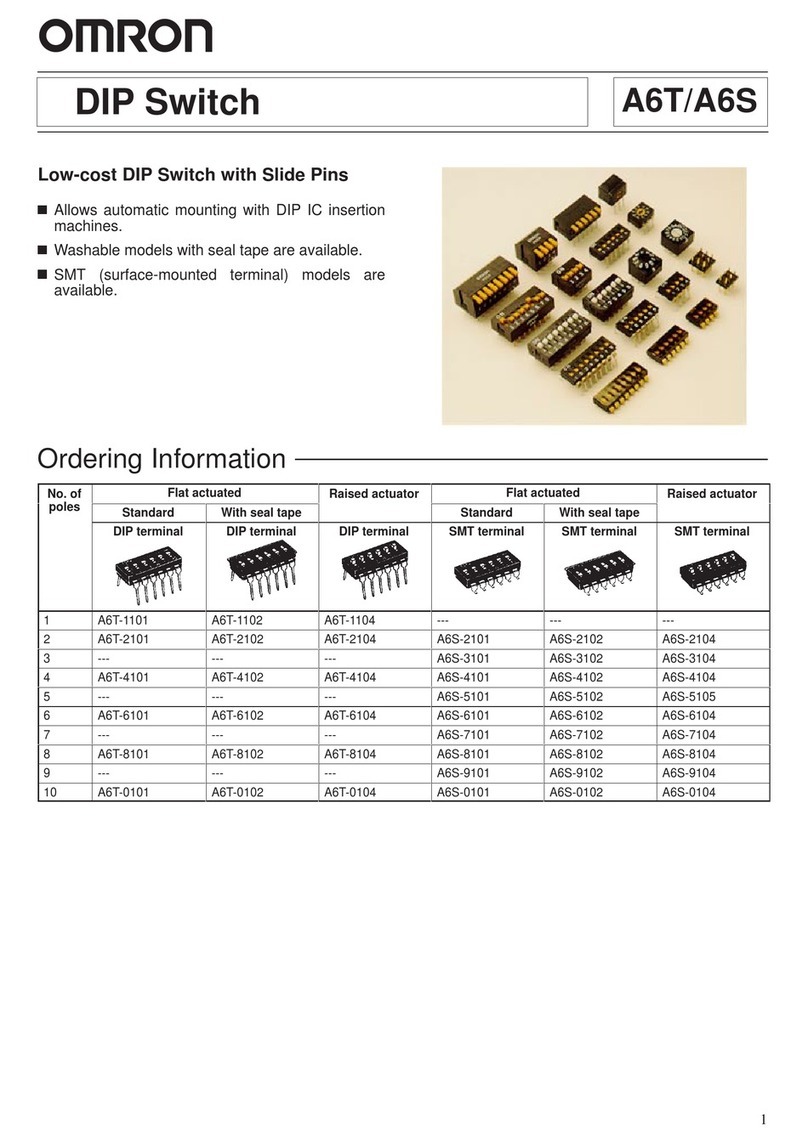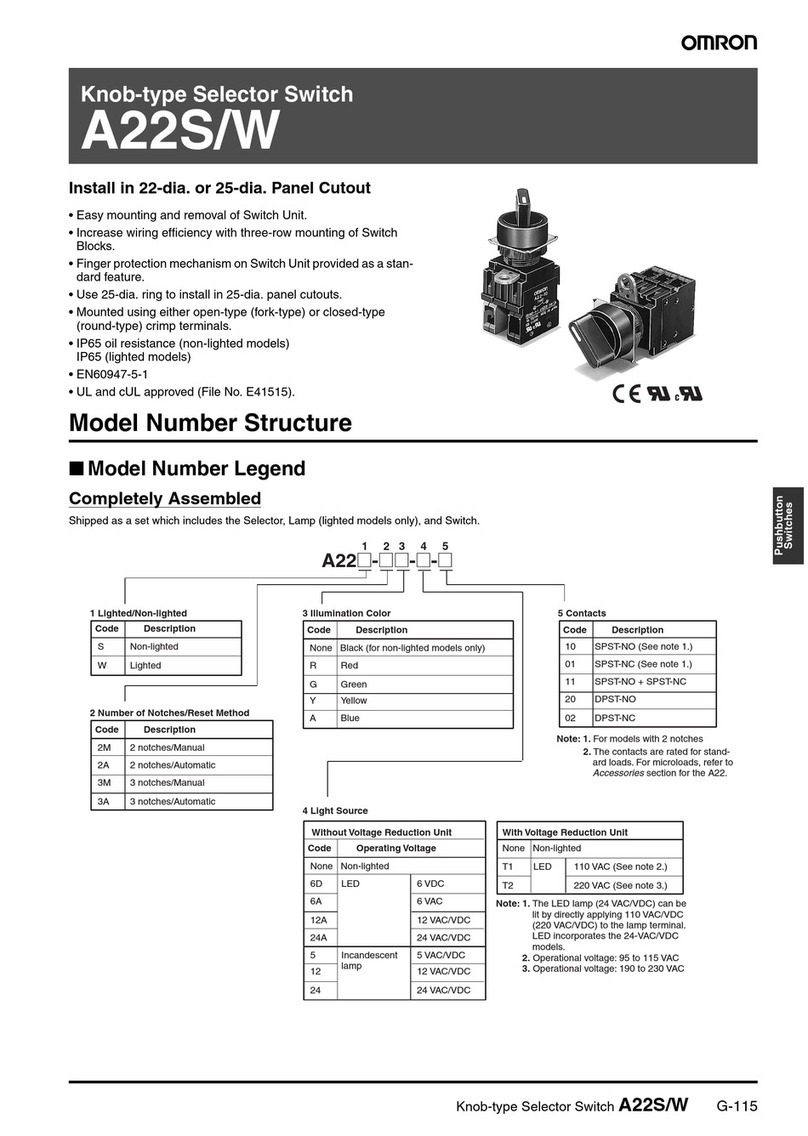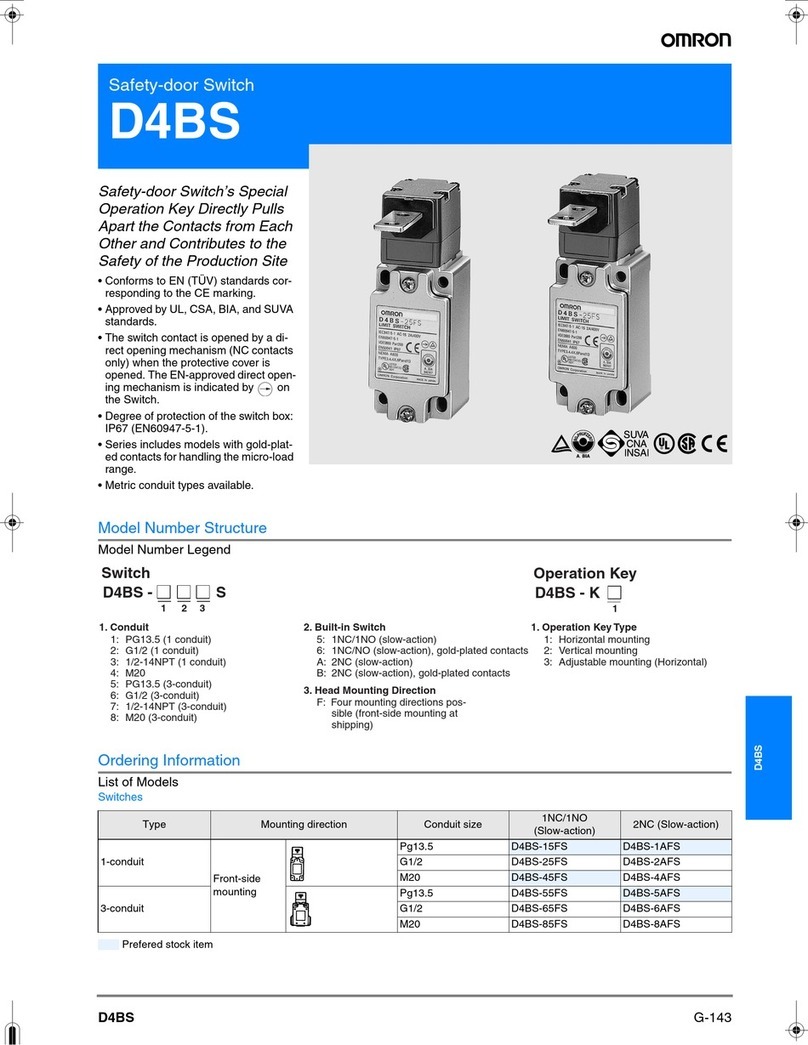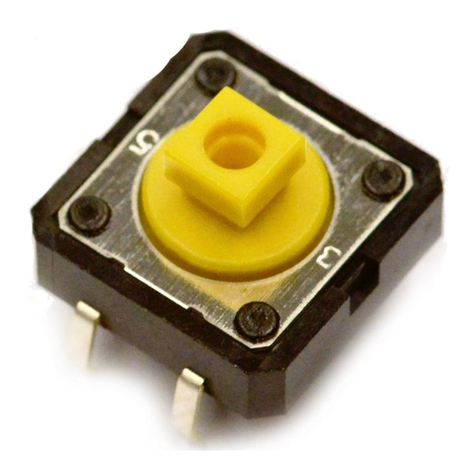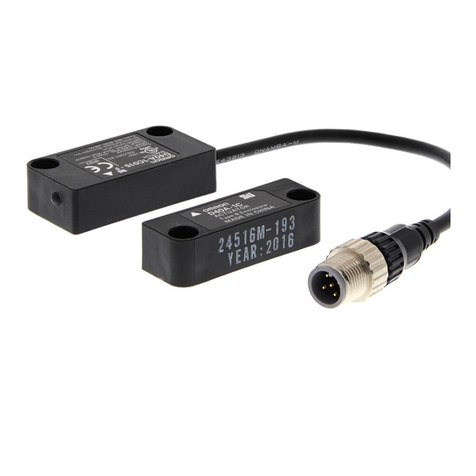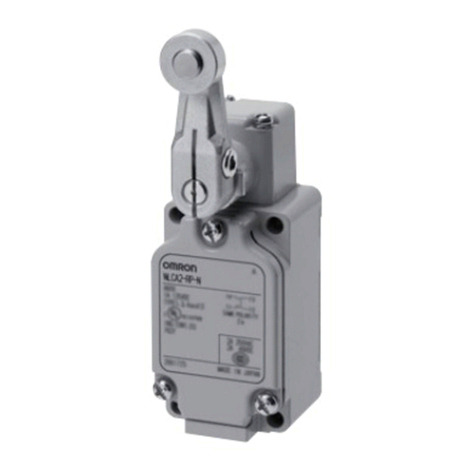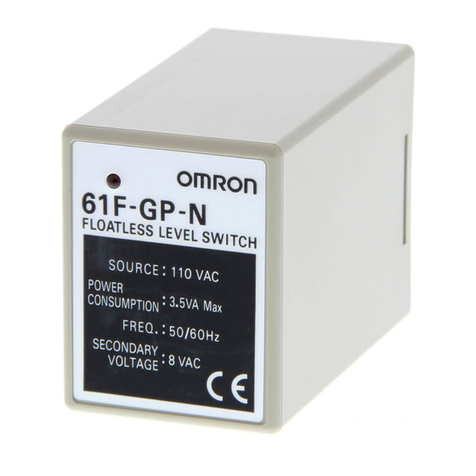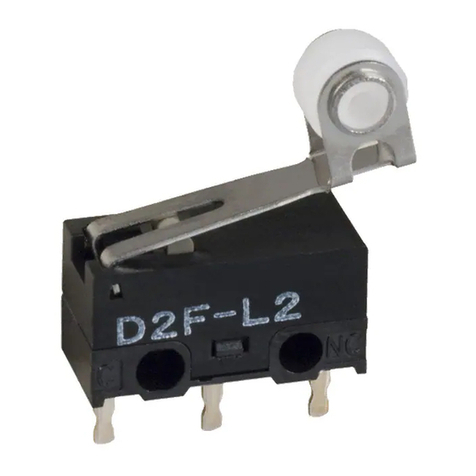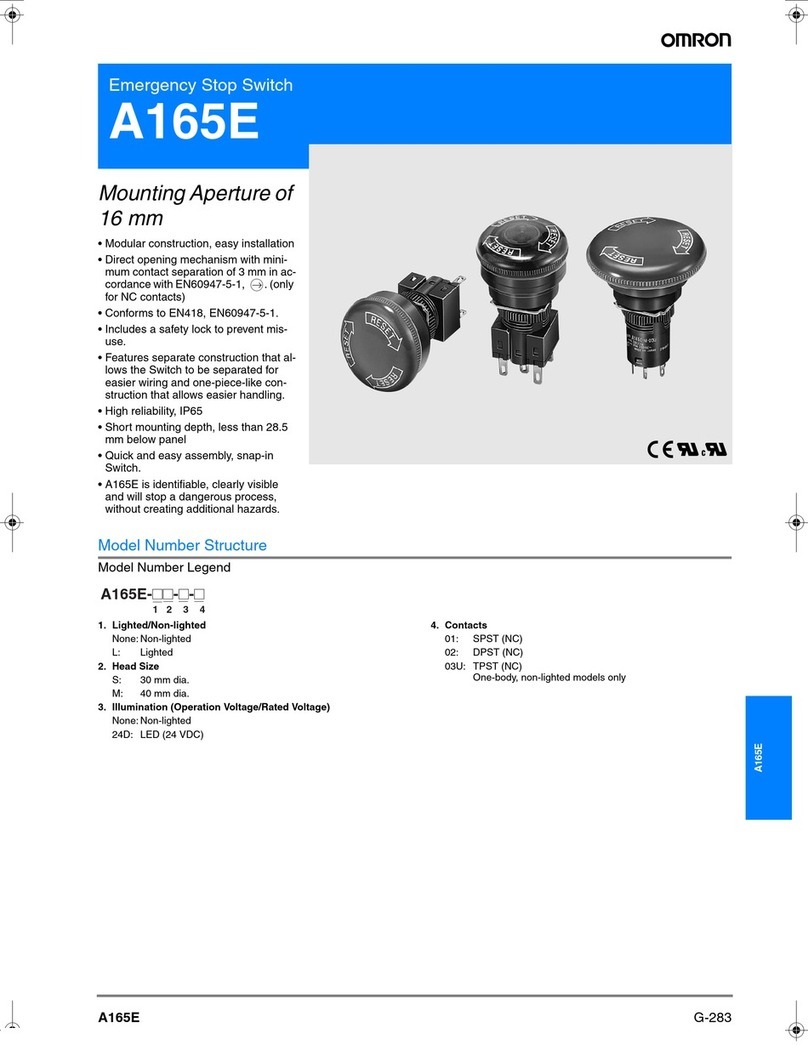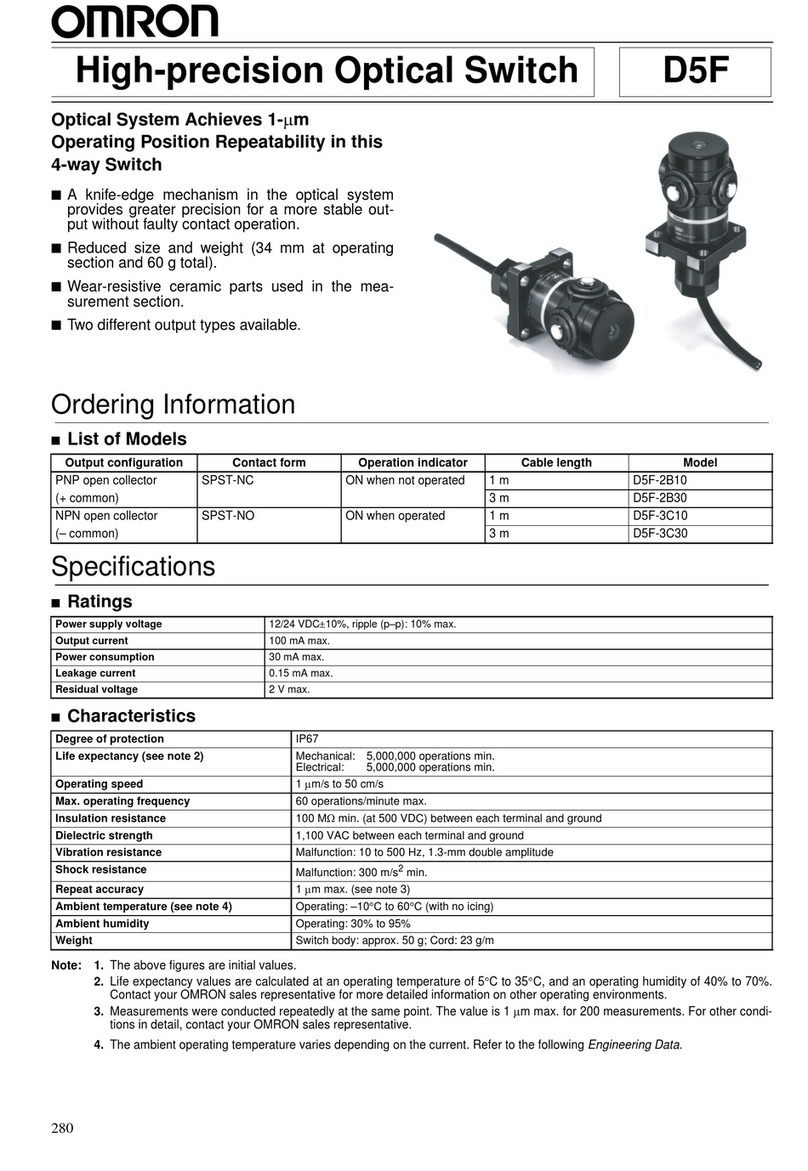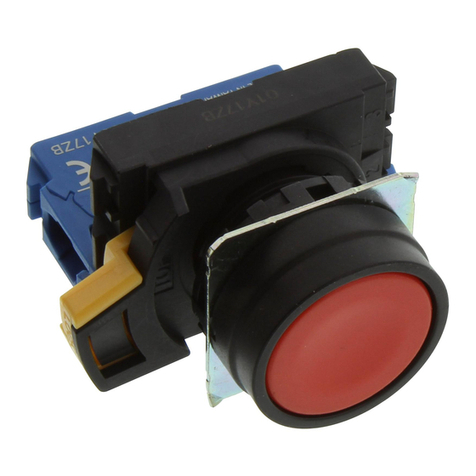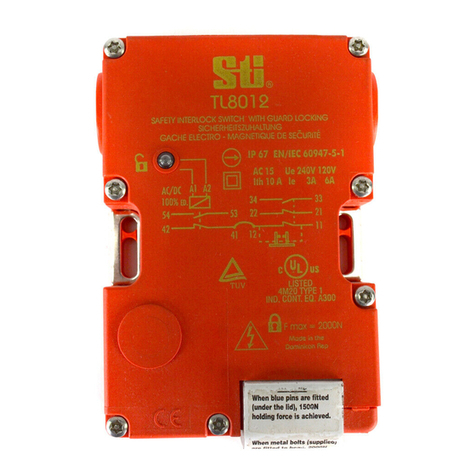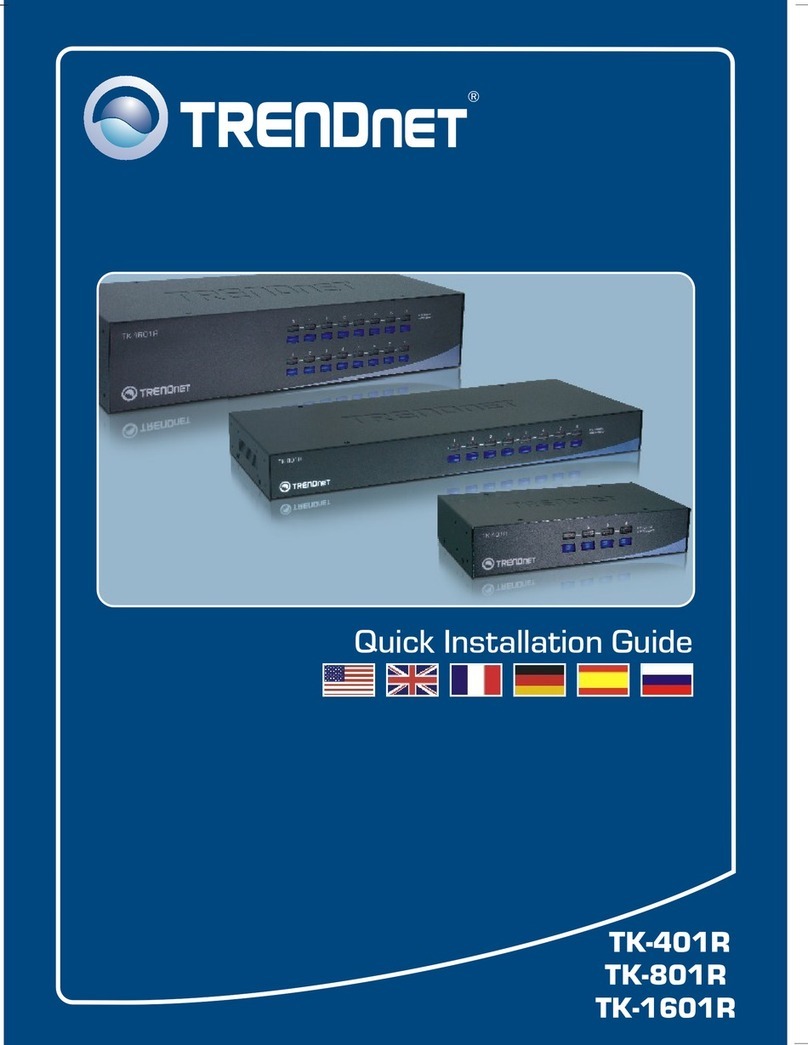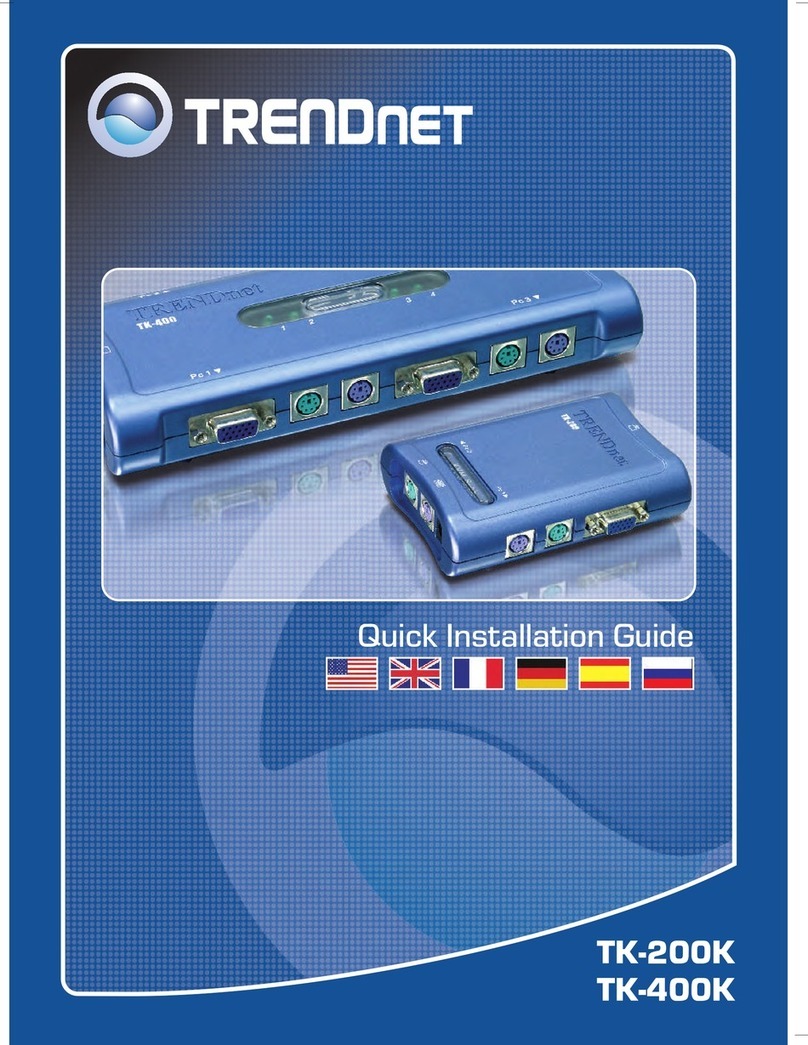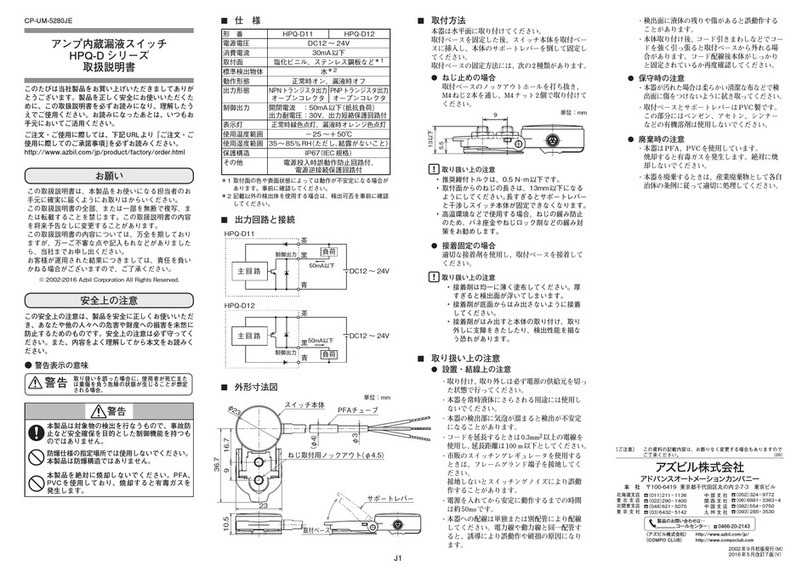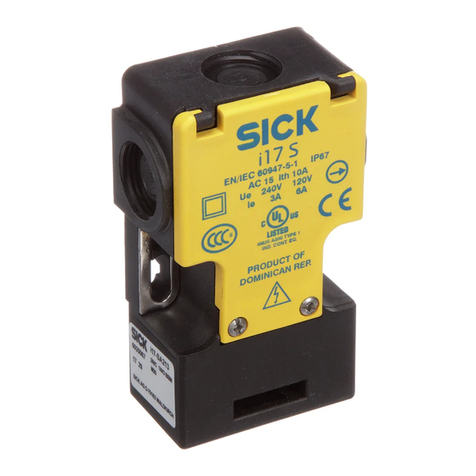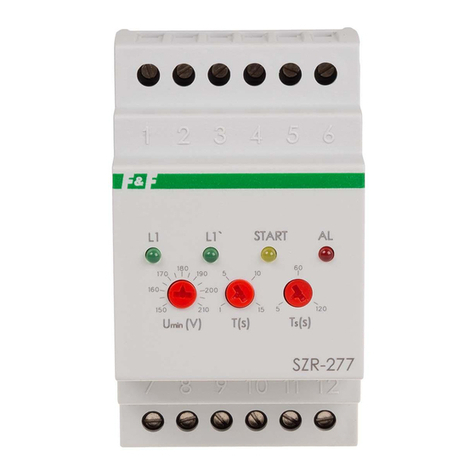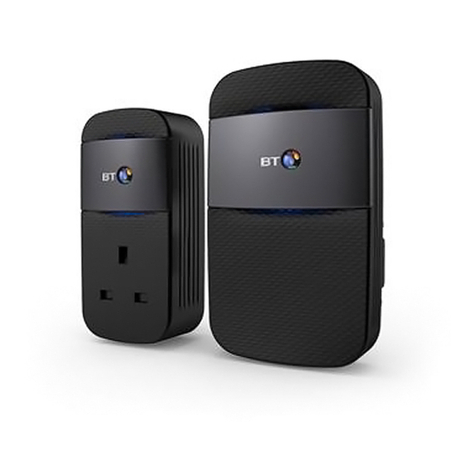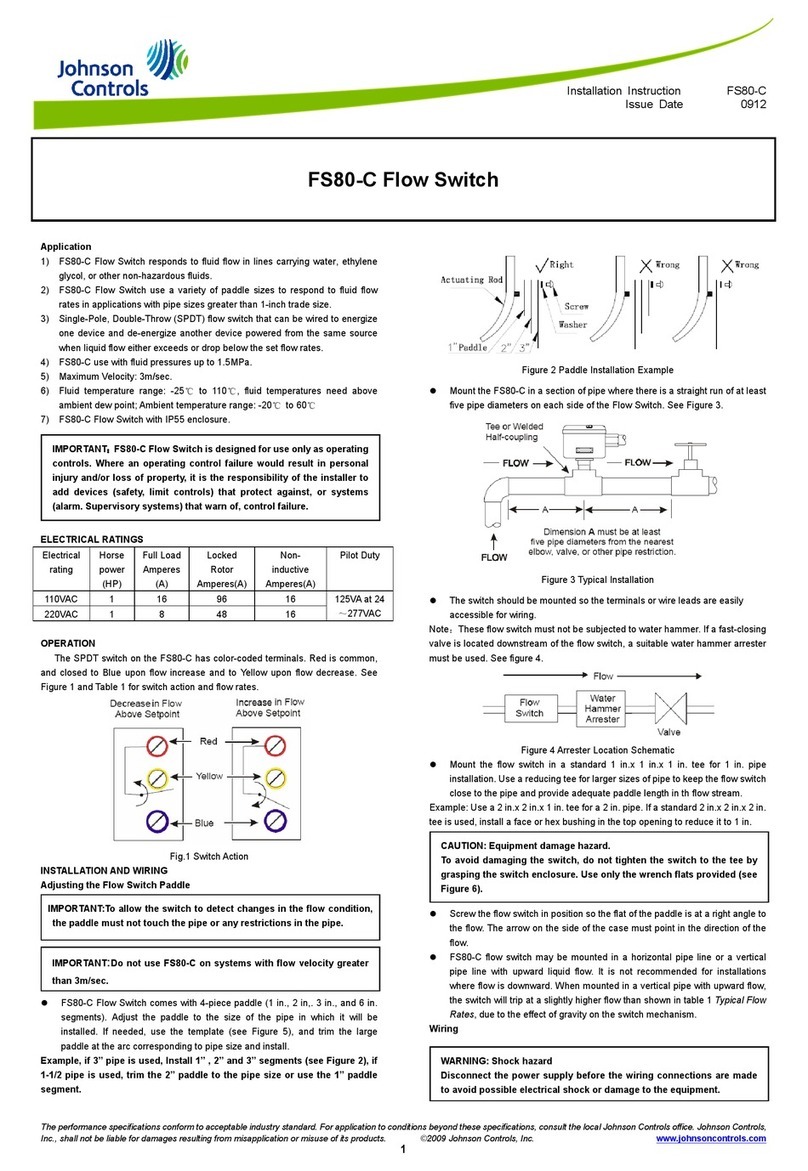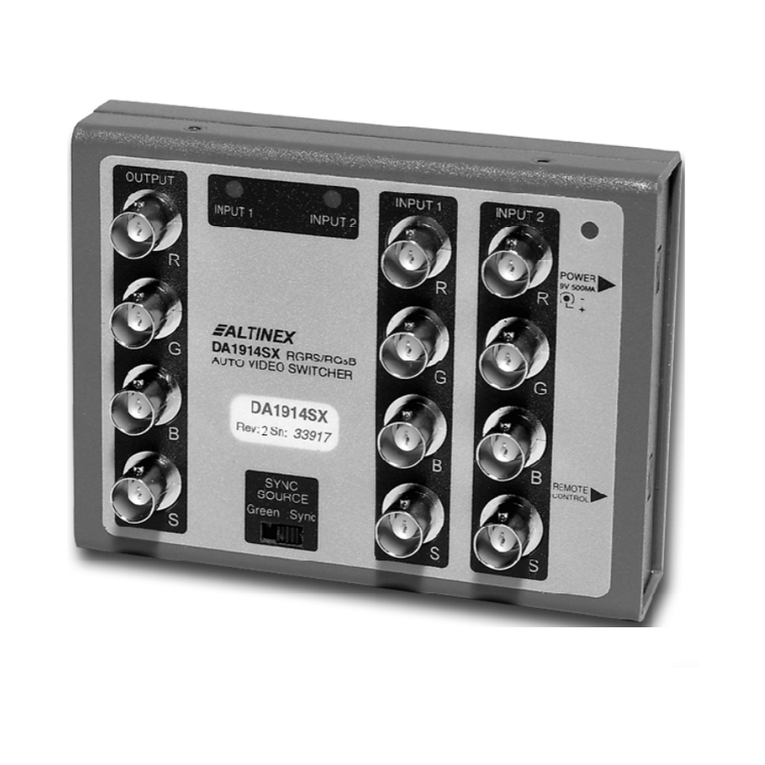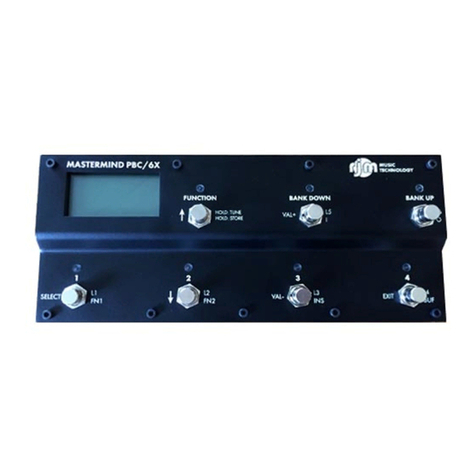
D40A/G9SX-NS
8
Characteristics
*1. When two or more Units are connected by logical AND, the operating time and response time are the sum total of the operating times and
response times, respectively, of all the Units connected by logical AND.
*2. Represents the operating time when the safety input turns ON with all other conditions set.
*3. Represents the operating time when the logical AND input and the Non-contact Door Switch input turn ON with all other conditions set.
*4. This does not include the operating time or response time of G9SX-NS@that are connected.
*5. This does not include the operating time or response time of internal relays in the G9SX-EX-@.
*6. The failure detection time for 24 V short-circuit failure on the input to Non-contact Door Switches is 35 ms max.
If using the Switch for an application other than as a Door Switch, calculate the safe distance using a failure detection time of 35 ms.
Item Model G9SX-NS202-@G9SX-NSA222-T03-@G9SX-EX-@
Over-voltage category
(IEC/EN 60664-1) II II (Relay outputs 13to 43and 14
to 44: III)
Operatingtime (OFF to ON state) *1
100 ms max. (Logical AND
connection input ON and
Non-contact Door Switch input
ON)
50 ms max. (Safety input: ON) *2
100 ms max. (Logical AND
connection input ON and
Non-contact Door Switch input ON)
*3
30 ms max. *4
Response time (ON to OFF state) *1
15 ms max. (Logical AND
connection input: OFF)
20 ms max. (Non-contact Door
Switch input OFF) *6
15 ms max. (Safety input OFF and
logical AND connection input OFF)
20 ms max. (Non-contact Door
Switch input: OFF) *6
10 ms max. *4
ON-state residual voltage3.0 V max. (safety output, auxiliary output)
OFF-state leakage current 0.1 mA max. (safety output, auxiliary output)
Maximum wiringlength of safety
input, logical AND connection
input, and Non-contact Door Switch
input
100 m max. (External connection impedance: 100 Ωmax. and 10 nF max.)
Reset input time
(Reset button pressingtime) 100 ms min.
Accuracy of OFF-delay time *5--- Within ±5% of the set value Within ±5% of the set value
Insulation
resistance
Between logical AND
connection terminals,
and power supply input
terminals and other
input and output
terminals connected
together
20 MΩmin. (at 100 VDC)
---
Between all terminals
connected together and
DIN rail
100 MΩmin.
(at 500 VDC)
Dielectric
strength
Between logical AND
connection terminals,
and power supply input
terminals and other
input and output
terminals connected
together
500 VAC for 1 min.
---
Between all terminals
connected together and
DIN rail 1,200 VAC for 1 min
Between different poles
of outputs
---
Between relay outputs
connected together and
other terminals
connected together
2,200 VAC for 1 min
Vibration resistance 10 to 55 to 10 Hz, 0.375 mm single amplitude (0.75 mm double amplitude)
Shock
resistance
Destruction 300 m/s2
Malfunction 100 m/s2
Durability
Electrical ---
100,000 cycles min. rated load,
switching frequency: 1,800
cycles/hour)
Mechanical --- 5,000,000 cycles min. (switching
frequency: 7,200 cycles/hour)
Ambient operatingtemperature −10 to 55°C (no icing or condensation)
Ambient operatinghumidity 25% to 85%
Terminal tighteningtorque 0.5 N·m (For the G9SX-NS@-RT (with screw terminals) only)
Weight Approx. 125 g Approx. 200 g Approx. 165 g
